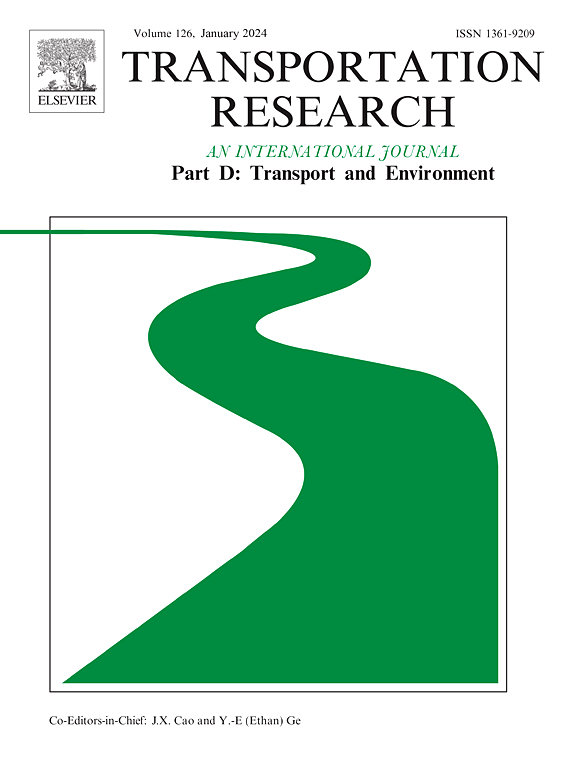Multi-perspective analysis of long-term vehicle emissions under intensive policy updates in China
IF 7.3
1区 工程技术
Q1 ENVIRONMENTAL STUDIES
Transportation Research Part D-transport and Environment
Pub Date : 2025-05-19
DOI:10.1016/j.trd.2025.104808
引用次数: 0
Abstract
China has implemented stringent emission control policies for passenger cars and trucks to mitigate vehicle exhaust emissions. Quantifying the environmental impact of policies requires the continuous updating and refinement of emission inventories. This study thus constructed long-term (2010–2021) emission inventory by vehicle type, fuel type and emission standard, considering regional differences and incorporating demographic and economic factors. Key findings included annual reductions in CO, HC, and PM2.5 emissions by 2.9%, 4.5%, and 4.9%, respectively, while CO2 and NOx emissions increased by 9% and 1.9%. Over 40% emissions were concentrated in six eastern provinces, which also achieved more pronounced emission reduction. Meanwhile, stronger economic support enabled lower emission while meeting higher transportation demand. Conversely, northeastern and northwestern provinces required greater attention to cope with adverse environmental impacts. Therefore, it is necessary to promote public transportation for eastern provinces and control vehicle growth for other provinces.
中国密集政策更新下汽车长期排放的多视角分析
中国对乘用车和卡车实施了严格的排放控制政策,以减少汽车尾气排放。量化政策对环境的影响需要不断更新和改进排放清单。因此,本研究在考虑地区差异的基础上,结合人口和经济因素,构建了2010-2021年的长期(车型、燃料类型和排放标准)排放清单。主要发现包括CO、HC和PM2.5的排放量分别减少了2.9%、4.5%和4.9%,而CO2和NOx的排放量分别增加了9%和1.9%。超过40%的排放量集中在东部六省,这些省份的减排效果也更为明显。同时,更强的经济支持可以在满足更高交通需求的同时降低排放。相反,东北和西北省份需要更多的关注来应对不利的环境影响。因此,有必要促进东部省份的公共交通,控制其他省份的车辆增长。
本文章由计算机程序翻译,如有差异,请以英文原文为准。
求助全文
约1分钟内获得全文
求助全文
来源期刊
CiteScore
14.40
自引率
9.20%
发文量
314
审稿时长
39 days
期刊介绍:
Transportation Research Part D: Transport and Environment focuses on original research exploring the environmental impacts of transportation, policy responses to these impacts, and their implications for transportation system design, planning, and management. The journal comprehensively covers the interaction between transportation and the environment, ranging from local effects on specific geographical areas to global implications such as natural resource depletion and atmospheric pollution.
We welcome research papers across all transportation modes, including maritime, air, and land transportation, assessing their environmental impacts broadly. Papers addressing both mobile aspects and transportation infrastructure are considered. The journal prioritizes empirical findings and policy responses of regulatory, planning, technical, or fiscal nature. Articles are policy-driven, accessible, and applicable to readers from diverse disciplines, emphasizing relevance and practicality. We encourage interdisciplinary submissions and welcome contributions from economically developing and advanced countries alike, reflecting our international orientation.

 求助内容:
求助内容: 应助结果提醒方式:
应助结果提醒方式:


